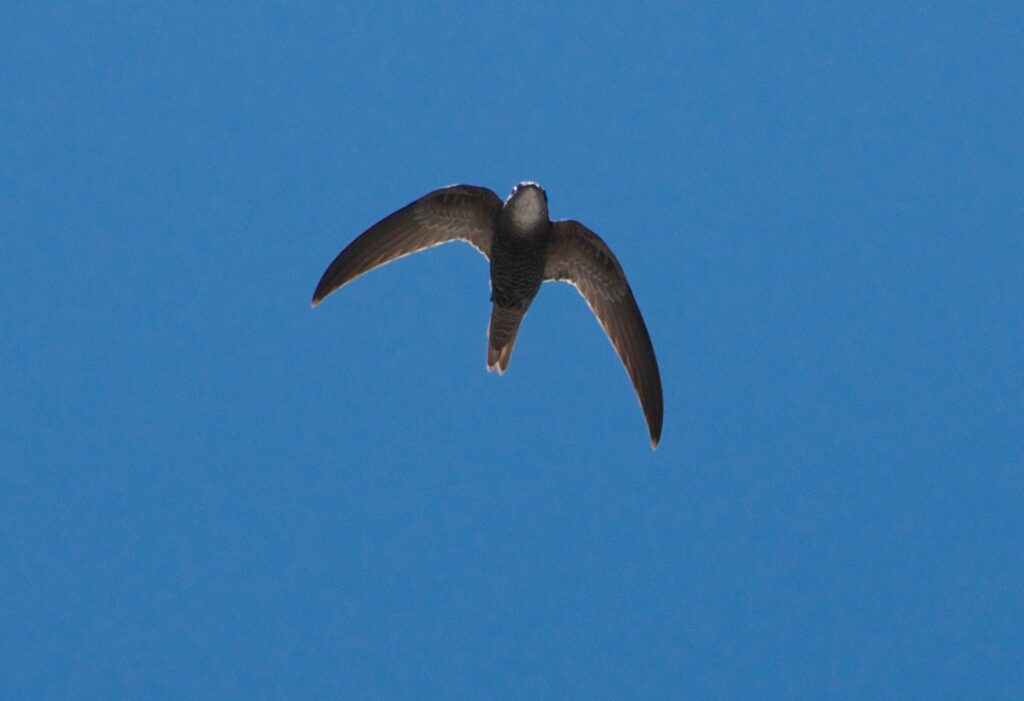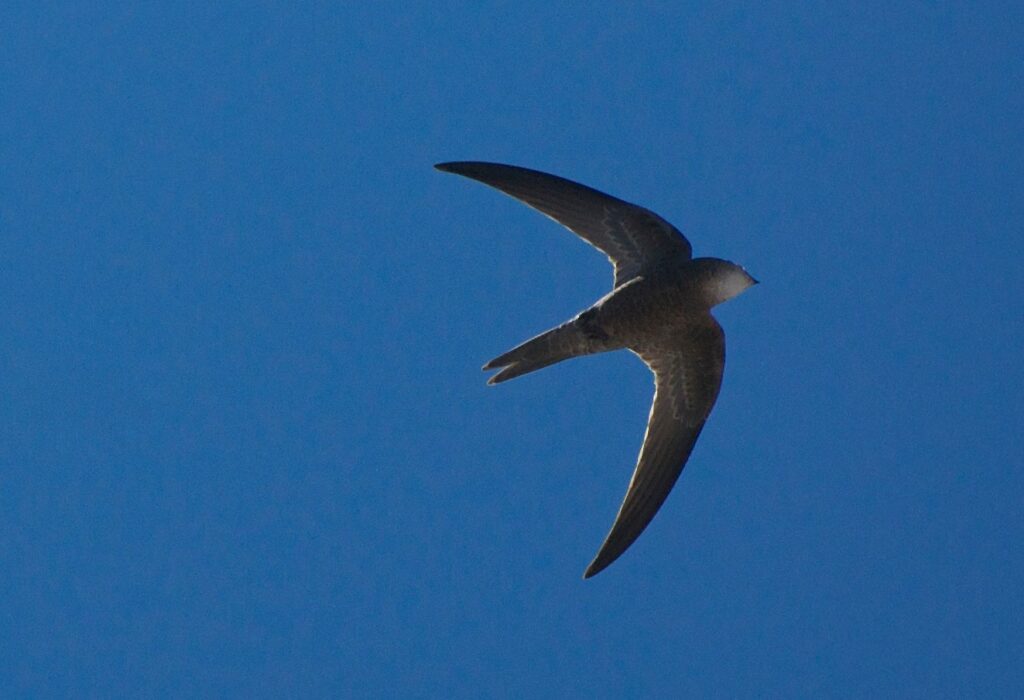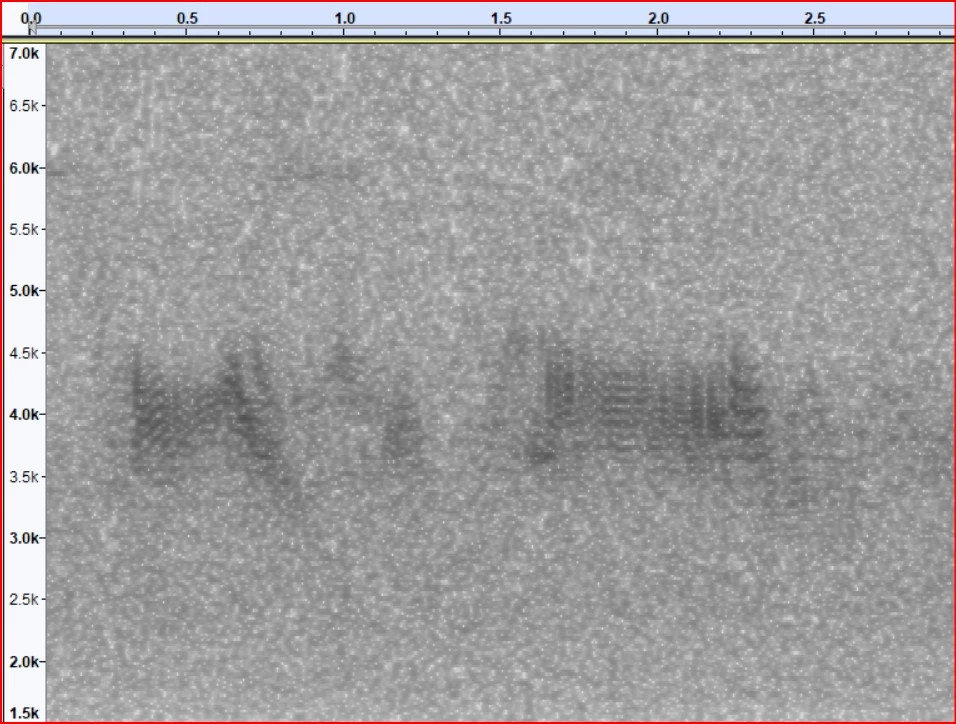In March of 2017 I was leading a birding tour to Southern Mozambique. On 3 March, while searching for the Green Tinkerbird some 30km inland from Inhassoro, I became aware that there were swifts overhead. Without giving it too much thought I recorded Common Swift on Birdlasser, but did pause to think that it was odd that they were calling – and calling a lot. I have not heard the call of Common Swift often as they’re mostly silent in Africa so the calls were unfamiliar.

Later that afternoon – we were back at Billfish Lodge, Inhassoro overlooking the ocean, when I became aware that a big flock of Swifts was above. Probably about 50 birds and they were calling a lot. Looking up they looked like Common Swifts in their GISS and flight action, although they seemed lazier than usual. After a very long day my birding group had dispersed and no camera capable of capturing the swifts was at hand!! Initially on hearing the calls, African Black Swift came to mind – since I am familiar with them screaming in groups around a nesting cliff, but no – these calls were deeper in tone and seemed more mellow. Although the light was going some swifts flew to the east and with the setting sun on them, they looked quite pale compared to what I am used to on Common Swift – perhaps the pekinensis race? They seemed to have prominent pale throats…. something that seemed odd. Almost as an afterthought, I realized I should record the calls of the swifts and stuck my voice recorder in the air. Shortly afterwards the swifts seemed to be heading out to sea in a NE direction…bizarre?

Later that evening when I updated my birdlasser list from the day, I pondered what to record? Nope, I don’t know what they were. I recorded nothing on Birdlasser. An active birding life is filled with many unanswered questions, and although the experience entered my mind a few times in the months that followed, I just never got around to doing much with that recording. I did listen to it after the trip and I remember thinking that the recording was too faint to do much with.
Fast forward 3 years
Sometimes in birding, serendipity plays a role – on 29 March I was chatting to my good friend (and birding legend) Gary Allport about “nocmig” and we got talking about an odd snipe I saw last year in Moz. For some reason the conversation turned to swifts, and something called a Forbes-Watson’s Swift which breeds in Somailia, Socotra and southern Arabia and winters on the Kenya coast. Gary mentioned that Neil Baker in Tanzania had suggested they might come further south and we should be looking out for odd swifts on the coast in Mozambique. Suddenly that weird experience at Inhassoro floated back into my memory.

What if?…… and then it was a hard-drive search for ancient sound files – I sent it to Gary and of course my other birding mentor, Faansie Peacock.
Gary put us in touch with swift expert Guy Kirwan as well as Brian Finch in E Africa. We all thought the recording sounds like Forbes-Watson’s!
What followed was then an in-depth project to measure aspects of the Inhassoro recording and compare with data from other recordings of all the likely possibilities. A fascinating deep dive into the vocal world of Swifts!! Thanks to Gary Allport and Faansie Peacock for huge support and input in this process, the results of which will be submitted in a comprehensive paper to the BOC Bulletin in the next few weeks; and then we await peer review.
The sound file of the Inhassoro birds has been loaded onto Xeno-Canto: https://www.xeno-canto.org/543748 so do go listen. I have labelled as Forbes-Watson’s Swift in anticipation!

There is also a set of tagged recordings of “Large Brown Swifts” on Xeno-Canto, https://www.xeno-canto.org/set/5842 so that you can listen to the comparison species more easily. I am also working on a ‘medley’ recording run at slower speed to help interpretation.
Meantime, all large dark swifts seen in Mozambique (especially near the coast) should be checked out for this species. If you have any photos or better still recordings then do dig them out. With luck we will be able to understand the patterns of occurrence of all these large, dark and rather mysterious birds better in the future.
Etienne Marais
April 2020
